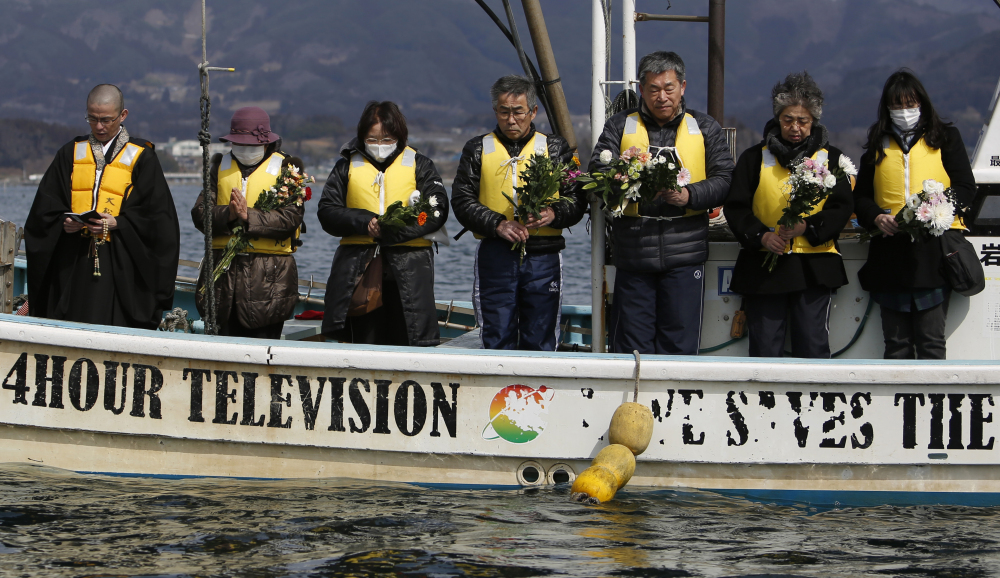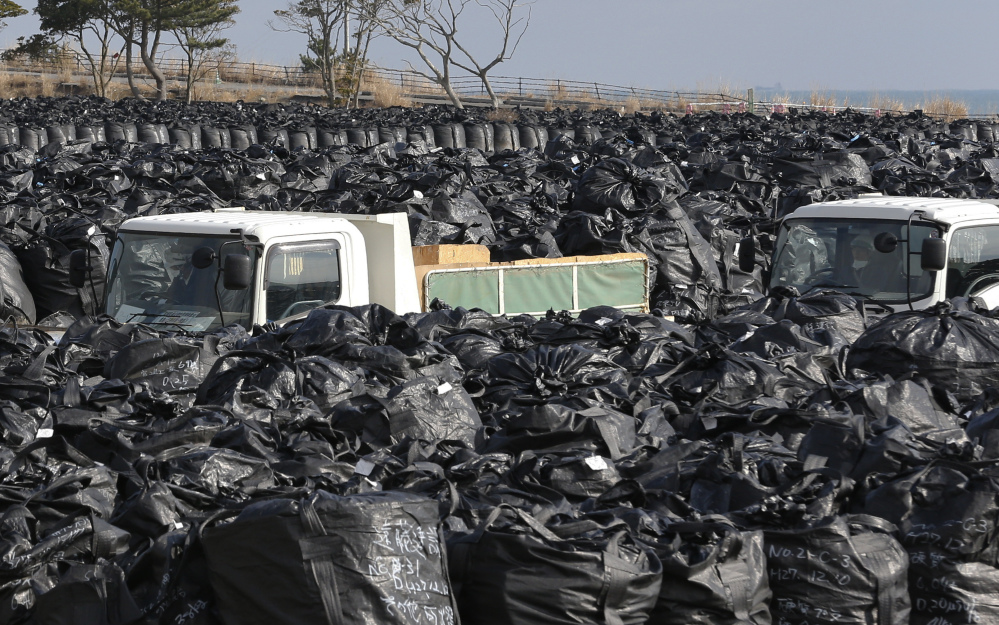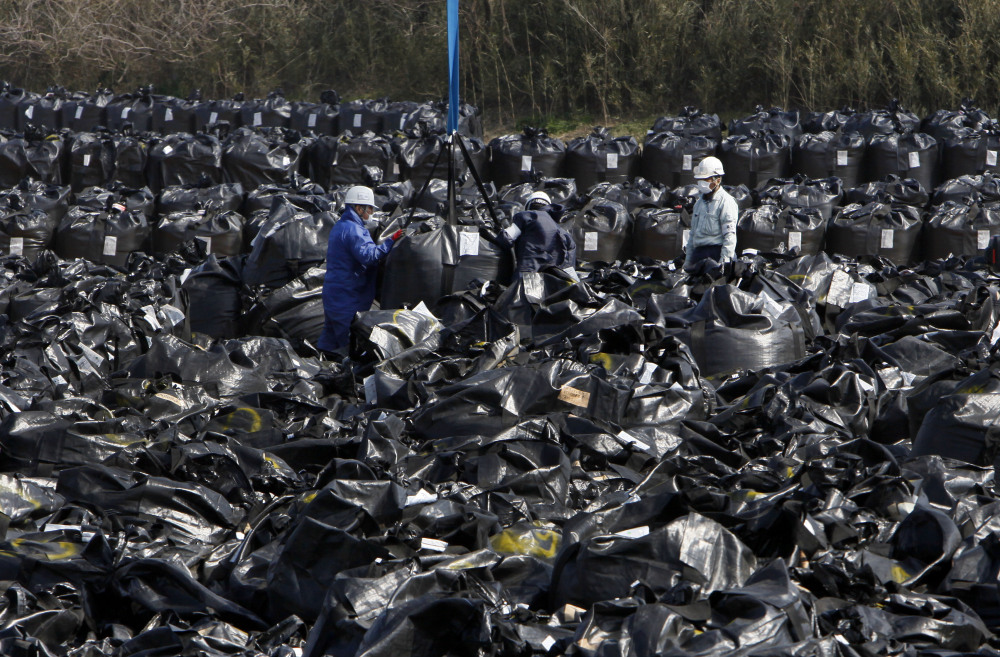RIKUZENTAKATA, Japan — Five years on, Masahiro Osada is doing OK. But only OK.
His Chinese restaurant is still located in the concrete-floored prefabricated building he moved into after the 2011 tsunami wiped out the building that had been in his family for a quarter-century.
Business is reasonable – it’s not like there are many other options in this coastal town, which was flattened in the disaster – and unusually, his son hasn’t fled to the big city and is instead working in the kitchen.
But he’s hardly optimistic.
“It’s been five years but the image of the tsunami still remains in me,” Osada said. “The situation is definitely changing but I have mixed feelings about whether or not to stay here.”
On Thursday, Japan marked the fifth anniversary of the magnitude 9.0 earthquake and resulting tsunami that claimed 18,000 lives and changed the northeastern coast forever.
Today, this stretch of shoreline is a bleak place.
The villages closest to the Fukushima Daiichi nuclear plant, which experienced a triple meltdown after the disaster, are deserted and uninhabitable, although former residents are being allowed to get closer and closer. More than 60,000 people remain in temporary housing.
At the nuclear plant itself, vast quantities of contaminated soil and water are being stored on-site while political leaders decide what to do with it, while the decommissioning process continues.
Further north, where the full force of the tsunami was felt, the coast is one long earthmoving site dotted with temporary buildings. It seems like every second vehicle on the roads is a dump truck or a cement mixer.
In Rikuzentakata, the tsunami leveled four of every five buildings and officials gave the city a 50-50 chance of survival.
Today it still feels as though Rikuzentakata’s future hangs in the balance.
Mayor Futoshi Toba wants to boost the population by welcoming people who otherwise face challenges in Japan – such as LGBT people, the disabled, single moms and immigrants.
A 40-foot-high sea wall is being built and workers are compacting dirt and rock to create elevated city blocks 50 feet tall.
The plan is for a shopping mall and central plaza area to open in about three years, out of reach of any future tsunami. At a service station nearby, a battered sign that once displayed gas prices now features a blue arrow marking the height of the 2011 wave: 15.1 meters (50 feet.)
But this plan rests on there being people here to shop, and jobs to give them money to shop. The population of the town is steadily shrinking and the main industry – fishing –isn’t what it once was.
The Washington Post visited Osada in his “temporary” restaurant at the end of 2011, eight months after the disaster. Then he was cautious but wanted to be optimistic.
Thanks to government backing, he had a rent-free prefab for his restaurant for five years. He hoped his decision to move back and reopen his business would set off a “chain reaction of courage.”
When the Post went back recently, he was not as upbeat.
He is heavily indebted and his lease is up at the end of 2016. He must decide whether to renew it, and whether to commit to moving into the new shopping center.
When reminded of his optimism at the end of 2011, he was surprised.
“When I opened the shop, there were still bicycles in the treetops, bodies found here and there, so compared to that it’s better,” he said. “But compared to before the earthquake, we definitely have fewer stores open and fewer customers. There hasn’t been a chain reaction.”
Send questions/comments to the editors.





Success. Please wait for the page to reload. If the page does not reload within 5 seconds, please refresh the page.
Enter your email and password to access comments.
Hi, to comment on stories you must . This profile is in addition to your subscription and website login.
Already have a commenting profile? .
Invalid username/password.
Please check your email to confirm and complete your registration.
Only subscribers are eligible to post comments. Please subscribe or login first for digital access. Here’s why.
Use the form below to reset your password. When you've submitted your account email, we will send an email with a reset code.